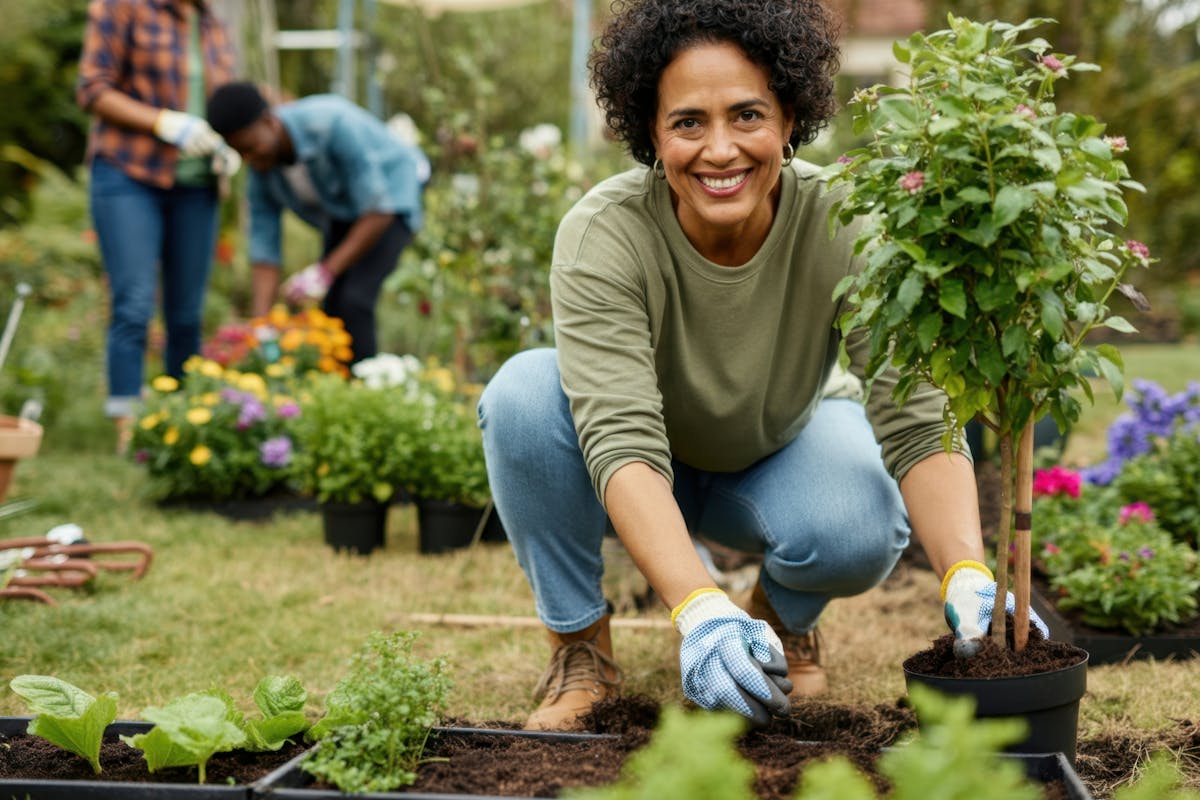Tips for Growing Herbs and Vegetables in Containers

Growing herbs and vegetables in containers is an easy way to enjoy your favorite fresh foods all summer long. It allows you to make the most of limited space, whether you’re in an apartment or just want to maximize your outdoor area. Having your own edible garden can also be friendlier on the budget.
Container gardening is generally safer for people with disabilities or seniors who might struggle with mobility. Growing produce in containers also offers flexibility and portability. You can move your little gardens around to make the most of the sunshine and to be near water spigots.
Here’s a quick guide to help you get started this summer.
Choosing the Right Containers
It all starts with selecting the right containers. When it comes to vegetables and herbs, size does matter. Bigger containers hold more soil, which means more nutrients and better water retention. For most vegetables like tomatoes, peppers, or lettuce, it’s best to choose containers that are at least 12 to 18 inches in diameter and 12 inches deep. Herbs like basil, thyme, and mint will thrive in smaller pots but still need a reasonable amount of space to allow for root growth.
Plastic, clay, and fabric pots are all great options. Plastic pots are lightweight and retain moisture well, while clay pots are more aesthetically pleasing but tend to dry out faster. Fabric pots (or grow bags) are breathable, which encourages better root health, but they may require more frequent watering. Be sure to choose containers with drainage holes to prevent waterlogging, which can lead to root rot.
Choosing the Right Plants
The next step is to research which plants are the best choices for the space you have available. Some vegetables and herbs do better in containers than others, so it’s essential to consider their growing needs. Here are some herbs and vegetables that thrive in containers:
- Herbs: Basil, rosemary, thyme, parsley, chives, cilantro, and mint are all ideal candidates for container gardening. Mint can be invasive, so it’s best to keep it in its own container to prevent it from overtaking other plants.
- Vegetables: Leafy greens such as spinach, lettuce, and arugula do well in containers because they don’t need deep soil. Tomatoes, peppers, and beans can also be successfully grown in containers, provided they have enough space and support.
- Root Vegetables: Carrots, radishes, and small potatoes can be grown in deeper containers. Ensure your container is at least 12 inches deep to allow the roots to grow comfortably.
Soil and Fertilizing
For healthy, thriving plants, using the right soil is crucial. Opt for a high-quality potting mix designed for containers, as it will provide the right balance of drainage, aeration, and moisture retention. Avoid using garden soil, which can compact in containers and hinder root growth.
Since plants in containers have limited access to nutrients, they will need regular feeding. Use a balanced, slow-release fertilizer or liquid feed every two weeks throughout the growing season. Over-fertilizing can harm plants, so always follow package directions. These tips from the experts at the Old Farmer’s Almanac can help you learn more.
Watering and Care
Watering is one of the most important aspects of container gardening. Because containers dry out faster than in-ground beds, you’ll need to monitor your plants closely. Most herbs and vegetables need consistent moisture, but they don’t like to sit in water. Water thoroughly, ensuring the excess drains out of the bottom of the container. On hot summer days, you may need to water daily.
Check plants regularly for pests and diseases. Aphids, spider mites, and whiteflies are common pests in container gardens. If you spot any, promptly treat the plants with an organic pesticide or wash them off with a strong jet of water.
Placement and Sunlight
Most herbs and vegetables require at least 6 to 8 hours of sunlight daily. Ensure your containers are placed in a sunny spot, such as a south- or west-facing patio or balcony. If you’re growing leafy greens or herbs like mint, some afternoon shade can keep them from wilting under the midday heat.
Keep a Mobile Monitoring Unit Handy
Working in the garden is a great activity for your physical and mental health. But it does pose some risks, especially for older adults, ranging from falls to heat-related illnesses. To give yourself greater peace of mind, invest in an emergency call device. The Life Protect 24/7 mobile unit can connect you to help with the press of a button. Call 1-844-203-5617 today to learn more!